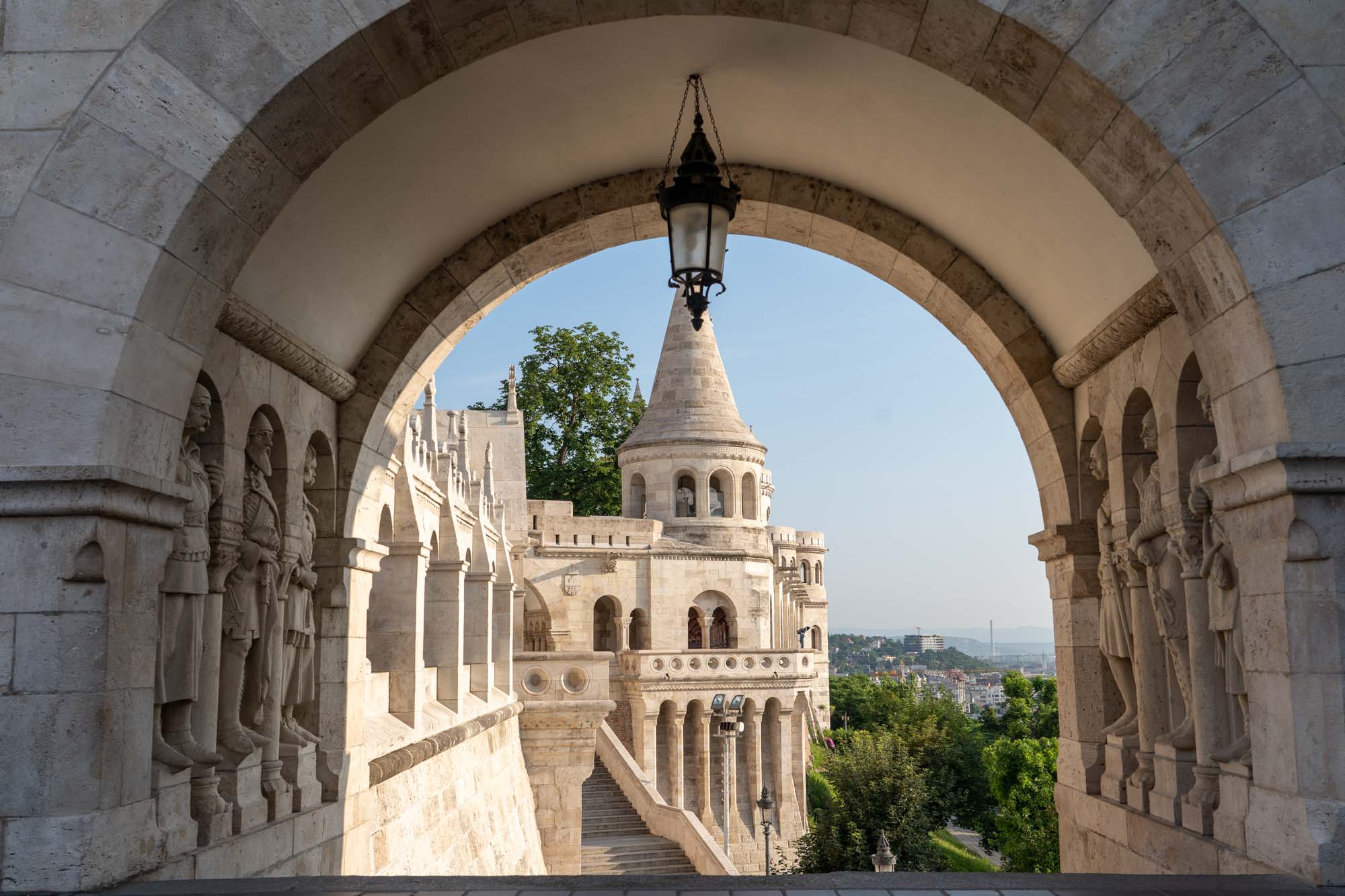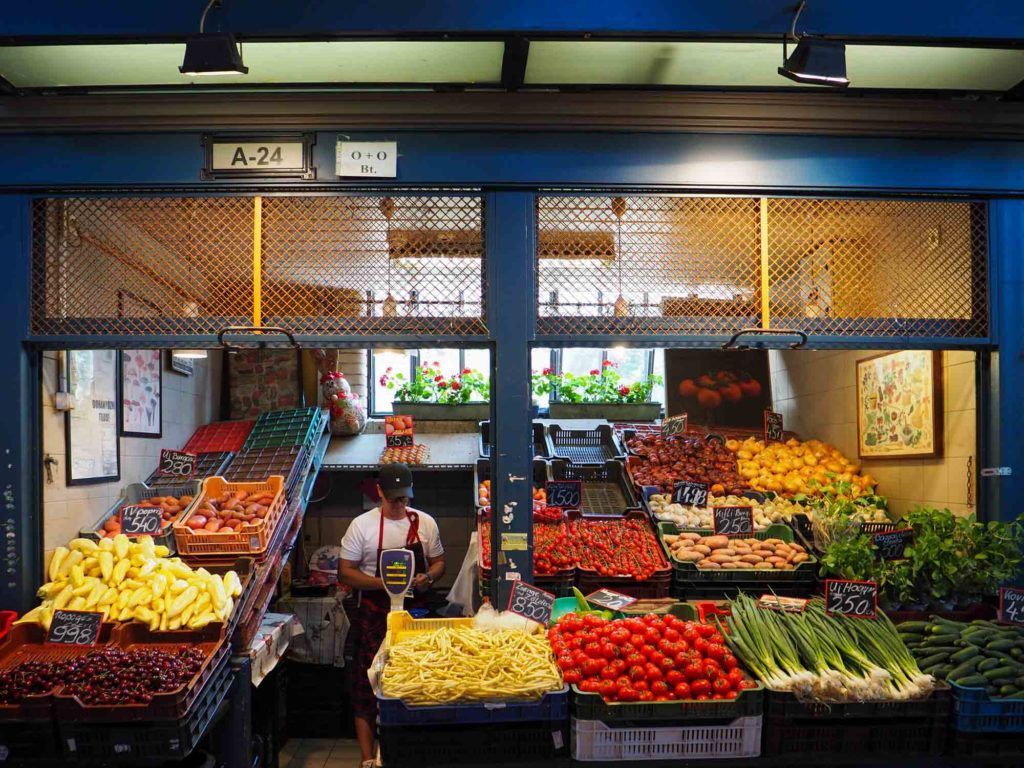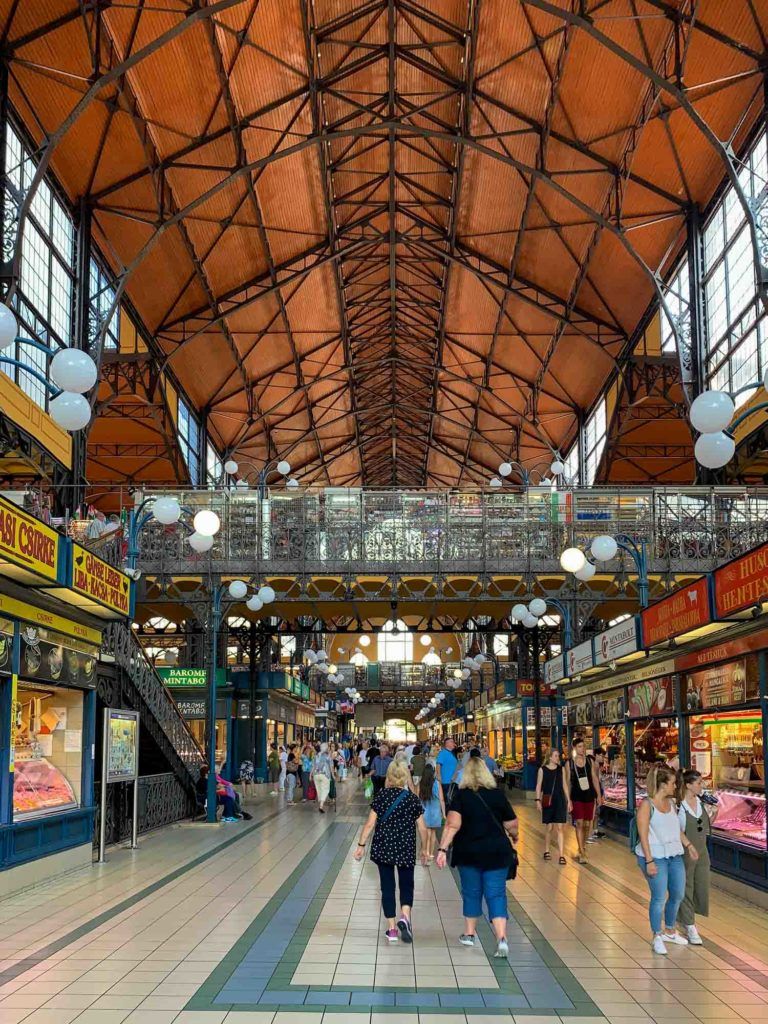10 Things to Do in Budapest for the History Lover

Ask me about my favorite cities in Europe, and I guarantee that up near the top will be Budapest, Hungary.
Budapest was actually one of the very first cities I ever visited in mainland Europe. I dreamt about Eastern Europe after reading The Historian in college, and found myself oddly drawn to cities like Budapest and Istanbul before other popular spots like London and Rome.
When I visited Budapest for the first time in 2012, I instantly fell in love.

The city has changed a bit since my first visit; it's not quite as much of a secret as it used to be. But everything that I loved about Budapest on that first visit still holds true: the food, the culture, and the history are all still there.
As a self-professed history nerd, I never feel like I can truly connect to a place until I know a little bit about its past. And when it comes to history, Budapest has plenty of it.
Note: This post was written after my third visit to Budapest, as part of a paid project between myself, Avalon Waterways and iambassador. As always, all opinions (and historical geek-out moments) are completely my own.

A quick Budapest history lesson
The history of Budapest stretches back to long before Budapest ever existed – and in fact before Hungarians even lived in the area that is now Hungary. The city that is now Budapest started out as a Celtic settlement, and became the ancient Roman town of Aquincum in the 1st century. Ruins from this Roman town can still be found in Budapest today.
Aquincum was largely destroyed during the fall of the Roman empire, and the city that would become Budapest changed hands several times in the next 1500 years. Modern-day Hungary began when the Magyars (Hungarians) arrived in the area in the 9th century. Stephen I became the first official king of Hungary in the year 1000, and is largely credited with founding the nation.
By this point, two separate cities existed on either side of the Danube River: the city of Buda and the city of Pest. Buda was the seat of the Hungarian kings, and became especially important culturally during the reign of King Matthias Corvinus, who basically brought the Italian Renaissance to Hungary.

Buda's age of enlightenment was brought to a halt, though, when the Ottomans finally conquered the city in the mid-1500s and ruled for the next 150 years. The Ottomans were driven out of Buda in 1686, but Hungary soon found itself under the rule of the Habsburgs. An attempted (and failed) revolution in 1848 eventually led to the formation of the Austro-Hungarian Empire.
Budapest officially became Budapest when Buda and Pest were combined in 1873, and it served as a co-capital of the Austro-Hungarian Empire until the empire was dissolved following World War I.
Following World War II, Hungary was brought in to the Soviet fold. An attempted revolution in Budapest in 1956 failed, and Hungary remained part of the Soviet bloc until the Soviet Union fell. Hungary became a republic again for the third time and held its first democratic elections in 1990.

Whew. Are you still with me? If you got through all that, you might have noticed all the different groups that have controlled Budapest through the centuries. Each of them have influenced and shaped the city into what it is today.
Things to do in Budapest if you love history
With such a long and varied history, there's no shortage of cool historical things to do in Budapest. I mean, the whole city is essentially a UNESCO World Heritage Site now.
Here are my top picks for what to do in Budapest if you love history as much as I do.
1. Explore Castle Hill

My first suggestion in Budapest is already one of the most-visited spots in the city: Castle Hill. Kings ruled Hungary from this spot on the Buda side of the Danube for centuries, and the area is appropriately grand.
There are several things to see and do in the Castle Quarter, all of which have historical significance:
Budapest Castle Hill Funicular – The Castle Hill funicular, or Budavári Sikló, connects one end of Budapest's famous Széchenyi Chain Bridge to Castle Hill. The funicular dates back to 1870 (before Budapest was even unified!), though the original funicular railway was destroyed during WWII and had to be rebuilt. This is a great way to get up to the top of Castle Hill.

Buda Castle – The palace complex atop Castle Hill was the home of Hungary's kings for centuries. The Baroque palace that's currently at the heart of the Castle Quarter dates to the mid-1700s. Since Hungary doesn't have kings and queens any longer, though, the palace is now home to two of Budapest's main museums: the Hungarian National Gallery and The Budapest History Museum
Matthias Church – One of the most iconic buildings on Castle Hill is also one of the oldest. Matthias Church dates back to 1269, though it's gone through several different design changes and renovations over the years. It originally was called The Church of Our Lady, but was later re-named after King Matthias Corvinus. It's famous today for its beautifully tiled roof.

Fisherman's Bastion – Located next to Holy Trinity Square and Matthias Church is Fisherman's Bastion, another iconic spot in Budapest. The current towers and terraces aren't all that old (they were built between 1895 and 1902), but they sit on the same site where a local fisherman's guild built defensive walls in the Middle Ages.


Pro tip: Want to get excellent photos at Fisherman's Bastion and Castle Hill? Arrive early in the morning (just after sunrise) to avoid the crowds.
2. See a saint at St. Stephen's
If you like to visit churches when you travel, a must-see in Budapest is St. Stephen's Basilica. Named for the first King of Hungary (who was canonized as a saint in 1083), St. Stephen's is one of the largest churches in the country and one of the tallest buildings in Budapest.

The church was built in Neo-Classical style and opened in 1905. Inside, you can see what is purportedly the preserved right hand of St. Stephen himself, and go to the top of the cathedral's dome for a 360-degree view out over Budapest.
3. Tour Hungarian Parliament
One of the most striking buildings in Budapest is the Hungarian Parliament building, the largest building in Hungary and the seat of the Hungarian government.

It sits right on the Danube on the Pest side of the city, and is instantly recognizable by its neo-Gothic facade. The building dates back to the turn of the 20th century, and is actually bigger than it needs to be. The Hungarian government switched over to a unicameral legislature after WWII, and doesn't even use the whole building anymore; these days, one of the parliament halls is used for politics, while the other identical hall is used for guided tours.
Speaking of tours, you can tour the Hungarian Parliament! You can take a 45-minute guided tour of the building's detailed interior. Tickets are required, and you should definitely book your ticket in advance!

4. Reflect at the Shoes on the Danube Bank memorial
Like many major cities in Europe, Budapest suffered severe damage during WWII. Hungary was allied with Hitler and Germany for most of the war, though, and when Budapest was bombed during the Siege of Budapest in 1944/45, it was the Soviets doing the bombing.
Hungary suffered catastrophic loss of life in WWII: it's estimated that 300,000 Hungarian soldiers and more than 650,000 civilians died during World War II, including more than 400,000 Jews.
Near the Hungarian Parliament building on the east bank of the Danube sits a very moving memorial to some of Budapest's Jewish residents who lost their lives during the war.

The memorial is a collection of 60 pairs of empty iron shoes, to represent the empty shoes left behind by Jews who were lined up here along the Danube by Arrow Cross militiamen in 1944/45, ordered to take their shoes off, and then shot so that their bodies fell into the river.
I often see people taking selfies in this spot, so I wanted to explain its actual meaning – it's a memorial to dead people, not necessarily a place for an Instagram shoot.
5. Go for a bite at the Great Market Hall

Budapest's Great Market Hall (or Central Market Hall) is a 100,000-square-foot indoor food market on the famous pedestrian shopping street Váci utca on the Pest side of Budapest. It's known for its architecture, and of course its culinary offerings!
It was built as a market hall in 1897, and while it's more touristy today, it's still a spot where locals shop for meat and produce, too. You can find everything from sausages to cheese to spices on the main floor, and some prepared food vendors and souvenir shops on the second floor (try the lángos, which is somewhere between a donut and a pizza).

If you have some time and would like to learn more about the market AND Hungarian food, consider booking a food tour of the market.
6. Have a drink at a ruin bar
Budapest is going through another mini-Renaissance now, and has been growing in popularity as a tourist destination. But some of the most popular spots to hang out hearken back to the days when the city was struggling: ruin bars.

Ruin bars and pubs are now a staple in Budapest. They're basically what they sound like: bars located in once-abandoned, dilapidated buildings. The majority of these bars are found in the VII District, or the old Jewish Quarter, which was largely abandoned after WWII.
In the early 2000s, people started experimenting with using these old crumbling buildings for pop-up bars, doing nothing to them except throwing up some twinkling lights and bringing in some alcohol. Today, most ruins bars are still exactly like this.
The most famous ruin bar in Budapest is the original one: Szimpla Kert, located on Kazinczy utca. This bar is made up of a mish-mash of eclectically decorated rooms and outdoor areas. Sip drinks while sitting in an old Trabant car, or even in a bathtub!

Other popular ruin bars in Budapest include Instant (a more club-like atmosphere), Fogas Ház, and Mazel Tov (a chic ruin bar).
7. Visit Heroes' Square
You can check multiple historical things off your list if you head to Heroes' Square on the Pest side of the Danube. This square sits at one end of Andrássy Avenue, and is part of one of Budapest's UNESCO World Heritage sites.
To get here, you can either take a walk up Andrássy Avenue, or you can ride the Budapest Metro. The Budapest Metro opened in 1896 and is the oldest electrified underground railway system in continental Europe (the London Underground is the only one older), and the line to get to Heroes' Square (or Hősök tere) is Line 1, the original.

Once at Heroes' Square, you can admire the iconic columns and statues, which include important Hungarian leaders (look for King St. Stephen I), and the Seven Chieftains of the Magyars.
Nearby you'll also find City Park, which is a lovely green space to explore. The park is also home to the Széchenyi Thermal Baths – but more on this later!
8. Get out to Memento Park

Budapest doesn't necessarily like to embrace its difficult past, but you can still learn about it if you make a bit of an effort. A spot I finally got to visit on my most recent trip to Budapest was Memento Park. It's kind of like Heroes' Square, except very far out of the way and filled with old Soviet statues instead of Hungarian heroes.
After the Soviet Union fell, Budapest wanted to banish as many remnants from the 40 years of Soviet rule as it could. But instead of destroying or dismantling communist statues and monuments, the city simply removed them and literally did banish them.

Memento Park is now an open-air museum 25 minutes from the city center that houses more than 40 Soviet statues and monuments. Visiting isn't the easiest (there aren't great public transport links), but it's worth it.

I visited Memento Park as part of an excursion on an Avalon Waterways river cruise. As we wandered through the towering sculpture park, our local guide told us stories about growing up in Budapest while it was under Soviet rule. Talk about a fascinating afternoon!
9. Tour the city in a Trabant
The excursion I mentioned above that included a visit to Memento Park also included one of my favorite things I've done so far in Budapest: driving around the city in an old Trabant car.

Trabants, or Trabis, were cheap East German-made cars ubiquitous throughout the Soviet Union. There are several companies in Budapest that have restored old Trabis and now offer city tours in them.
Trabants are cramped, noisy, and hot during the summer months – yet driving around the city in them was SO much fun.

The tour I did was a custom one with Go Trabi Go, and we did not have to drive the Trabis ourselves. But most Trabant tours actually have you driving these little two-stroke cars around the city!
10. Take a bath
Another historic must-do in Budapest is to visit one of the city's famous thermal bath houses. Budapest is sometimes called the “City of Baths,” as it sits on a fault line and has more than 100 natural hot springs beneath it.

Baths in the city have been around for centuries, and were especially popular during Ottoman rule – the Turks are famous for their hammam baths, and they constructed many bath houses in Budapest. Some of these Turkish-style baths are still in operation, like Rudas Baths, Király Baths, and Veli Bej Baths.
You can also find some more modern bath houses throughout the city (though in this case, “modern” still means more than 100 years old). The most famous of these are the Széchenyi Thermal Baths (built 1909-1913) and the Gellért Baths (built 1912-1918).

I visited the Széchenyi baths on my first visit to Budapest, and absolutely loved the experience. The Neo-Baroque bath house is located in City Park, and I had no problem spending an entire afternoon there by myself.
Pro tip: Budapest's most famous baths can get busy, as both locals and tourists visit them. Go early in the day, and purchase a skip the line ticket in advance to help things go smoothly.
This is, of course, just scratching the surface of all the history that you can find in Budapest. The city has been around for thousands of years, and you could spend weeks here and probably still have plenty more to learn.
This guide should help you get off to a good start, though!
READ NEXT: How to Spend 2 Days in Budapest
Where are my fellow history nerds at? Have you been to Budapest?
Pin it for later:


Amanda Williams is the award-winning blogger behind A Dangerous Business Travel Blog. She has traveled to more than 60 countries on 6 continents from her home base in Ohio, specializing in experiential and thoughtful travel through the US, Europe, and rest of the world. Amanda only shares tips based on her personal experiences and places she's actually traveled!










Thank you so much for sharing this travel email with us! It will be one year ago on July 14 that our group of ten from the U.S. flew from Peoria, Illinois, to Budapest, Hungary! We had a half-day, guided tour of the city prior to boarding our Avalon ship, and we saw a bit of Budapest on our own the evening prior to boarding. It was, indeed, a charming city, and I wish that we could have spent much more time there! Your information makes me long to revisit the city to explore the many places we missed and only saw from afar.
I love Budapest so much, and am glad you got to explore a bit of it before your cruise!
Hey Amanda, I just went to Budapest and wanted to thank you for your awesome tips, I actually did it all 10! 🙂
One suggestion for the readers: given the choice I would go to Gellért instead of Széchenyi, it’s more well kept and less crowded.
Good to know! There are several nice baths to choose from in Budapest.
I visited Budapest around 13 years ago, but looking at your pictures brings back all the memories. I especially loved browsing through Memento Park. It’s something I haven’t seen anywhere else yet. It’s a great place to explore Budapest’s communist past
The history in Budapest is so interesting, and there’s so much of it!
Thanks a lot Amanda for this interestingly amazing article!
I love Budapest for everything it includes. I’ve been there and luckily were I for not missing a lot of your recommendations.
It was a short time trip so I couldn’t complete discovering all places, which are endless.
I appreciate your efforts presenting the truth.
I’ve been to Budapest 3 times now, and have enjoyed every visit! I’m sure I’ll be back.
My 1st trip to Budapest was in August 2014. It’s a wonderful city! I’ve stayed at the Gellert Hotel. The views of the the Danube River and Gellert Hill (depending where your room is located) are impressive–day or night!
I’m looking forward to returning to Budapest next year–my Avalon river cruise ends there.
I just did an Avalon cruise that started in Budapest – it will be great to end there, too! (If they offer the Retro tour as an optional extra excursion in Budapest, it was one of my favorite tours!)